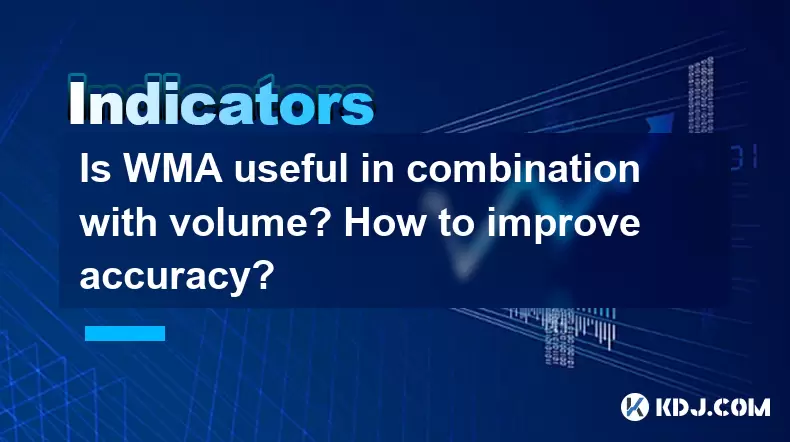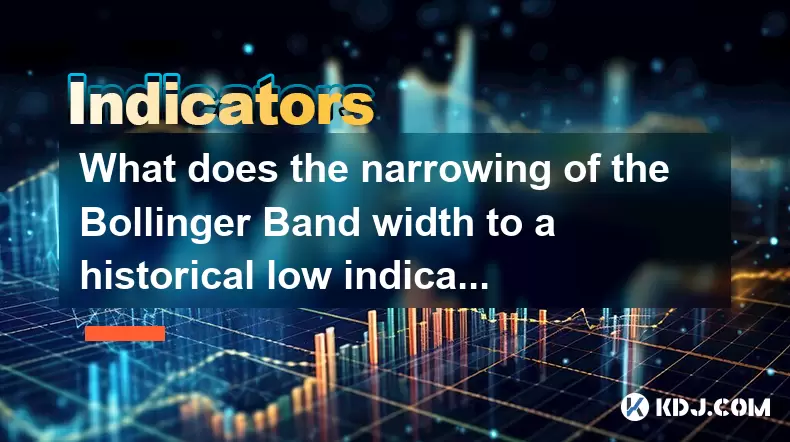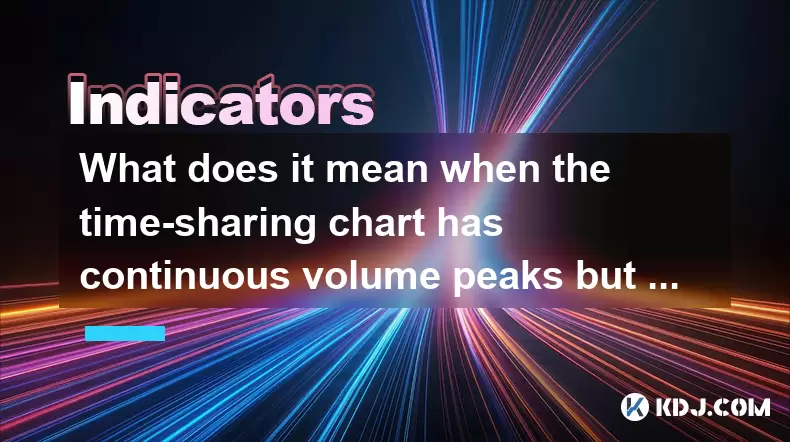-
 Bitcoin
Bitcoin $103,838.1703
5.33% -
 Ethereum
Ethereum $2,364.7328
10.94% -
 Tether USDt
Tether USDt $1.0007
0.03% -
 XRP
XRP $2.0950
9.02% -
 BNB
BNB $634.7170
5.25% -
 Solana
Solana $142.0264
11.70% -
 USDC
USDC $1.0000
0.00% -
 TRON
TRON $0.2728
5.18% -
 Dogecoin
Dogecoin $0.1598
10.80% -
 Cardano
Cardano $0.5655
9.94% -
 Hyperliquid
Hyperliquid $37.8554
11.16% -
 Sui
Sui $2.7196
17.77% -
 Bitcoin Cash
Bitcoin Cash $458.7795
4.67% -
 Chainlink
Chainlink $12.4271
12.53% -
 UNUS SED LEO
UNUS SED LEO $9.0769
0.74% -
 Avalanche
Avalanche $17.7117
12.43% -
 Stellar
Stellar $0.2392
9.83% -
 Toncoin
Toncoin $2.8765
9.58% -
 Shiba Inu
Shiba Inu $0.0...01131
11.69% -
 Litecoin
Litecoin $84.0378
9.79% -
 Hedera
Hedera $0.1456
14.65% -
 Monero
Monero $305.0298
5.16% -
 Ethena USDe
Ethena USDe $1.0006
0.03% -
 Dai
Dai $1.0001
0.02% -
 Polkadot
Polkadot $3.3522
10.31% -
 Bitget Token
Bitget Token $4.0785
3.25% -
 Uniswap
Uniswap $6.7682
13.08% -
 Pepe
Pepe $0.0...09557
13.29% -
 Pi
Pi $0.5253
9.79% -
 Aave
Aave $250.5247
16.65%
Is WMA useful in combination with volume? How to improve accuracy?
WMA, when combined with volume, helps traders confirm trends and identify reversals in cryptocurrency markets, enhancing trading accuracy.
May 22, 2025 at 01:56 pm

The Weighted Moving Average (WMA) is a popular technical indicator used by cryptocurrency traders to analyze market trends and make informed trading decisions. When combined with volume, WMA can provide valuable insights into market dynamics and potentially improve trading accuracy. In this article, we will explore the usefulness of WMA in combination with volume and discuss strategies to enhance its accuracy.
Understanding Weighted Moving Average (WMA)
The Weighted Moving Average (WMA) assigns more weight to recent price data, making it more responsive to recent price changes compared to the Simple Moving Average (SMA). This characteristic makes WMA particularly useful for traders looking to identify short-term trends and potential reversal points. The formula for calculating WMA is as follows:
[ \text{WMA} = \frac{\sum_{i=1}^{n} w_i \cdot pi}{\sum{i=1}^{n} w_i} ]
where ( p_i ) is the price at period ( i ), ( w_i ) is the weight assigned to the price at period ( i ), and ( n ) is the number of periods.
The Role of Volume in Trading
Volume is a critical metric in the cryptocurrency market, representing the total number of coins traded within a given period. High volume often indicates strong interest in a particular cryptocurrency, while low volume can signal a lack of interest or a consolidation phase. By analyzing volume alongside price movements, traders can gain a deeper understanding of market sentiment and potential trend strength.
Combining WMA with Volume: Benefits and Insights
Combining WMA with volume can enhance a trader's ability to make more informed decisions. Here are some key benefits and insights:
Confirmation of Trend Strength: When WMA indicates a bullish or bearish trend, high volume can confirm the strength of that trend. For example, if WMA is trending upwards and volume is increasing, it suggests strong buying pressure and a potential continuation of the upward trend.
Identifying Reversals: Divergences between WMA and volume can signal potential trend reversals. If WMA is moving upwards but volume is decreasing, it may indicate weakening momentum and a possible reversal to the downside.
Breakout Validation: When a cryptocurrency price breaks out of a key resistance or support level, high volume can validate the breakout. If WMA also supports the breakout direction, it provides a stronger signal for traders to enter a position.
Strategies to Improve WMA Accuracy
Improving the accuracy of WMA involves several strategies that traders can employ to refine their analysis and decision-making process:
Adjusting the Period Length: The period length of WMA can significantly affect its sensitivity to price changes. Short-term traders might use a shorter period length (e.g., 10-20 periods) to capture rapid price movements, while long-term traders might prefer a longer period length (e.g., 50-200 periods) for a broader view of the market trend.
Using Multiple Timeframes: Analyzing WMA across multiple timeframes can provide a more comprehensive view of market trends. For example, combining a short-term WMA on a 1-hour chart with a long-term WMA on a daily chart can help traders identify both short-term opportunities and long-term trends.
Incorporating Other Indicators: Combining WMA with other technical indicators, such as the Relative Strength Index (RSI) or the Moving Average Convergence Divergence (MACD), can enhance the accuracy of trading signals. For instance, if WMA indicates a bullish trend and RSI is not overbought, it might be a strong signal to enter a long position.
Backtesting and Optimization: Regularly backtesting WMA strategies using historical data can help traders identify the most effective period lengths and combinations with other indicators. Optimization involves adjusting parameters to improve the performance of the WMA strategy.
Practical Application: Using WMA and Volume in Trading
To effectively use WMA and volume in trading, traders can follow these steps:
Select the Appropriate Period Length: Determine the period length for WMA based on your trading style. For short-term trading, a 10-period WMA might be suitable, while a 50-period WMA could be more appropriate for long-term trading.
Plot WMA on Your Chart: Add the WMA to your trading chart. Most trading platforms allow you to customize the period length and color of the WMA line.
Analyze Volume Data: Add a volume indicator to your chart. Look for periods of high volume to confirm trends indicated by WMA.
Identify Key Signals:
- Bullish Signals: Look for instances where WMA is trending upwards and volume is increasing. This could indicate strong buying pressure and a potential continuation of the upward trend.
- Bearish Signals: Conversely, if WMA is trending downwards and volume is increasing, it suggests strong selling pressure and a potential continuation of the downward trend.
- Reversal Signals: Pay attention to divergences between WMA and volume. If WMA is moving upwards but volume is decreasing, it may indicate a weakening trend and a potential reversal.
Combine with Other Indicators: Use additional indicators like RSI or MACD to confirm signals provided by WMA and volume. For example, if WMA indicates a bullish trend and RSI is not overbought, it might be a strong signal to enter a long position.
Execute Trades Based on Signals: Once you have identified a strong signal, execute your trade according to your risk management strategy. Set appropriate stop-loss and take-profit levels to manage your risk effectively.
Case Study: Applying WMA and Volume in Bitcoin Trading
Let's consider a practical example of using WMA and volume in Bitcoin (BTC) trading:
Scenario: You are monitoring the 1-hour chart of BTC/USD. You have added a 20-period WMA and a volume indicator to your chart.
Observation: You notice that the WMA is trending upwards, indicating a potential bullish trend. At the same time, you see a significant increase in volume, confirming the strength of the bullish trend.
Action: Based on this signal, you decide to enter a long position on BTC/USD. You set a stop-loss just below the recent swing low to manage your risk and a take-profit level based on your analysis of potential resistance levels.
Outcome: The bullish trend continues, and the price of BTC/USD rises, reaching your take-profit level. You exit the trade with a profit, validating the effectiveness of using WMA and volume in your trading strategy.
Frequently Asked Questions
Q1: Can WMA be used effectively on all cryptocurrencies?
A1: WMA can be used on any cryptocurrency, but its effectiveness may vary depending on the liquidity and volatility of the specific cryptocurrency. For highly liquid cryptocurrencies like Bitcoin and Ethereum, WMA can provide reliable signals. However, for less liquid cryptocurrencies, the signals may be less accurate due to lower trading volume and higher price volatility.
Q2: How does WMA differ from other moving averages like SMA and EMA?
A2: WMA differs from the Simple Moving Average (SMA) and the Exponential Moving Average (EMA) in how it assigns weights to price data. WMA gives more weight to recent prices, making it more responsive to recent price changes than SMA. While EMA also emphasizes recent prices, it uses an exponential decay in weighting, whereas WMA uses a linear weighting system. The choice between WMA, SMA, and EMA depends on the trader's preference for responsiveness to recent price movements.
Q3: Is it necessary to use volume data with WMA, or can WMA be effective on its own?
A3: While WMA can be effective on its own, combining it with volume data can significantly enhance its accuracy. Volume provides additional context about market sentiment and trend strength, which can help confirm signals generated by WMA. Using volume data with WMA can lead to more reliable trading decisions, especially in identifying trend continuations and reversals.
Q4: How often should I adjust the period length of WMA to maintain accuracy?
A4: The frequency of adjusting the period length of WMA depends on your trading strategy and the market conditions. For short-term trading, you might need to adjust the period length more frequently to stay responsive to rapid price movements. For long-term trading, less frequent adjustments may be sufficient. Regular backtesting and monitoring of market conditions can help you determine when adjustments are necessary to maintain accuracy.
Disclaimer:info@kdj.com
The information provided is not trading advice. kdj.com does not assume any responsibility for any investments made based on the information provided in this article. Cryptocurrencies are highly volatile and it is highly recommended that you invest with caution after thorough research!
If you believe that the content used on this website infringes your copyright, please contact us immediately (info@kdj.com) and we will delete it promptly.
- Bitcoin Scaling Showdown: Lightning Network, Sztorc, and the Future of Payments
- 2025-06-24 04:25:12
- Cathie Wood, ARK Invest, and Circle Shares: A Wild Ride on the Stablecoin Wave
- 2025-06-24 04:25:12
- Download 2025: Live Review Through Martha's Lens
- 2025-06-24 04:32:10
- Turtle Club Joins Kaito Leaderboard: A New Era for Ecosystem Push
- 2025-06-24 04:35:12
- Crypto Penny Coins: Hunting for Monster Gains in 2025
- 2025-06-24 02:45:12
- Ethereum Whale Dips Into Crashing ETH: Smart Move?
- 2025-06-24 02:25:12
Related knowledge

How to interpret that the time-sharing chart shows "volume and price rise together" but the MACD red column shortens?
Jun 24,2025 at 01:08am
Understanding the Concept of 'Volume and Price Rise Together'In cryptocurrency trading, when a time-sharing chart shows that both volume and price rise together, it is typically interpreted as a sign of strong buying pressure. This means more traders are entering long positions, pushing the price higher while increasing the trading volume. This phenomen...

Is it contradictory that the moving average system is arranged in a bullish pattern but the DMI shows a decline in trend strength?
Jun 23,2025 at 11:43pm
Understanding the Moving Average and DMI RelationshipIn cryptocurrency trading, technical analysis plays a crucial role in identifying potential trends and making informed decisions. Two of the most commonly used indicators are the Moving Average (MA) and the Directional Movement Index (DMI). While both tools aim to provide insight into market direction...

How to interpret that the Williams indicator quickly turns back in the overbought area but does not fall below the 50-axis?
Jun 24,2025 at 02:01am
Understanding the Williams %R Indicator in Cryptocurrency TradingThe Williams %R indicator, often referred to as Williams Percent Range, is a momentum oscillator used by traders to identify overbought or oversold conditions in financial markets, including cryptocurrency. It ranges from 0 to -100, where values above -20 are considered overbought and thos...

What is the significance of the gap formed by the gap opening not being filled within five days?
Jun 23,2025 at 09:42pm
Understanding Gaps in Cryptocurrency TradingIn the world of cryptocurrency trading, a gap refers to a situation where the price of an asset jumps from one level to another without any trading activity occurring between those two levels. This often happens over weekends or holidays when the market is closed, and significant news or events occur that impa...

What does the narrowing of the Bollinger Band width to a historical low indicate?
Jun 24,2025 at 02:35am
Understanding Bollinger Bands and Their Role in Technical AnalysisBollinger Bands, developed by John Bollinger in the 1980s, are a popular technical analysis tool used to measure market volatility. They consist of three lines: a simple moving average (SMA) in the center, typically over a 20-period setting, and two outer bands that are set at a standard ...

What does it mean when the time-sharing chart has continuous volume peaks but the price fluctuation is not large?
Jun 24,2025 at 03:49am
Understanding the Time-Sharing Chart in Cryptocurrency TradingIn cryptocurrency trading, time-sharing charts are crucial tools that help traders monitor real-time price movements and volume activity. These charts display data within specific time intervals—such as 1-minute, 5-minute, or 15-minute windows—and allow for granular analysis of market behavio...

How to interpret that the time-sharing chart shows "volume and price rise together" but the MACD red column shortens?
Jun 24,2025 at 01:08am
Understanding the Concept of 'Volume and Price Rise Together'In cryptocurrency trading, when a time-sharing chart shows that both volume and price rise together, it is typically interpreted as a sign of strong buying pressure. This means more traders are entering long positions, pushing the price higher while increasing the trading volume. This phenomen...

Is it contradictory that the moving average system is arranged in a bullish pattern but the DMI shows a decline in trend strength?
Jun 23,2025 at 11:43pm
Understanding the Moving Average and DMI RelationshipIn cryptocurrency trading, technical analysis plays a crucial role in identifying potential trends and making informed decisions. Two of the most commonly used indicators are the Moving Average (MA) and the Directional Movement Index (DMI). While both tools aim to provide insight into market direction...

How to interpret that the Williams indicator quickly turns back in the overbought area but does not fall below the 50-axis?
Jun 24,2025 at 02:01am
Understanding the Williams %R Indicator in Cryptocurrency TradingThe Williams %R indicator, often referred to as Williams Percent Range, is a momentum oscillator used by traders to identify overbought or oversold conditions in financial markets, including cryptocurrency. It ranges from 0 to -100, where values above -20 are considered overbought and thos...

What is the significance of the gap formed by the gap opening not being filled within five days?
Jun 23,2025 at 09:42pm
Understanding Gaps in Cryptocurrency TradingIn the world of cryptocurrency trading, a gap refers to a situation where the price of an asset jumps from one level to another without any trading activity occurring between those two levels. This often happens over weekends or holidays when the market is closed, and significant news or events occur that impa...

What does the narrowing of the Bollinger Band width to a historical low indicate?
Jun 24,2025 at 02:35am
Understanding Bollinger Bands and Their Role in Technical AnalysisBollinger Bands, developed by John Bollinger in the 1980s, are a popular technical analysis tool used to measure market volatility. They consist of three lines: a simple moving average (SMA) in the center, typically over a 20-period setting, and two outer bands that are set at a standard ...

What does it mean when the time-sharing chart has continuous volume peaks but the price fluctuation is not large?
Jun 24,2025 at 03:49am
Understanding the Time-Sharing Chart in Cryptocurrency TradingIn cryptocurrency trading, time-sharing charts are crucial tools that help traders monitor real-time price movements and volume activity. These charts display data within specific time intervals—such as 1-minute, 5-minute, or 15-minute windows—and allow for granular analysis of market behavio...
See all articles
























































































